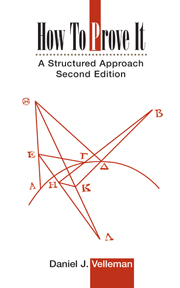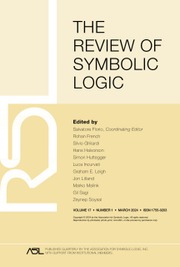How to Prove It
Many students have trouble the first time they take a mathematics course in which proofs play a significant role. This new edition of Velleman's successful text will prepare students to make the transition from solving problems to proving theorems by teaching them the techniques needed to read and write proofs. The book begins with the basic concepts of logic and set theory, to familiarize students with the language of mathematics and how it is interpreted. These concepts are used as the basis for a step-by-step breakdown of the most important techniques used in constructing proofs. The author shows how complex proofs are built up from these smaller steps, using detailed 'scratch work' sections to expose the machinery of proofs about the natural numbers, relations, functions, and infinite sets. To give students the opportunity to construct their own proofs, this new edition contains over 200 new exercises, selected solutions, and an introduction to Proof Designer software. No background beyond standard high school mathematics is assumed. This book will be useful to anyone interested in logic and proofs: computer scientists, philosophers, linguists, and of course mathematicians.
- Systematic and thorough, showing how several techniques can be combined to construct a complex proof
- Selected solutions and hints are now provided, plus over 200 exercises, some using Proof Designer software, to help students learn to construct their own proofs
- Covers logic, set theory, relations, functions and cardinality
Reviews & endorsements
'The book begins with the basic concepts of logic and theory … These concepts are used as the basis for a step-by-step breakdown of the most important techniques used in constructing proofs. No background standard in high scholl mathematics is assumed.' L'Enseignement Mathématique
Product details
No date availableHardback
9780521861243
400 pages
236 × 155 × 27 mm
0.64kg
10 tables 536 exercises
Table of Contents
- 1. Sentential logic
- 2. Quantificational logic
- 3. Proofs
- 4. Relations
- 5. Functions
- 6. Mathematical induction
- 7. Infinite sets.








